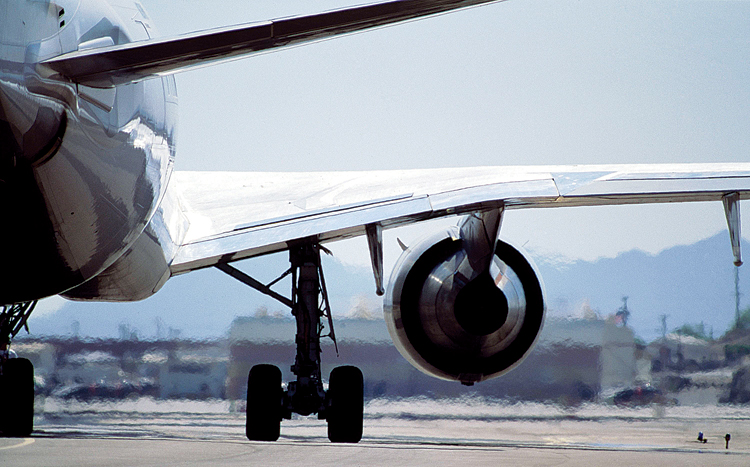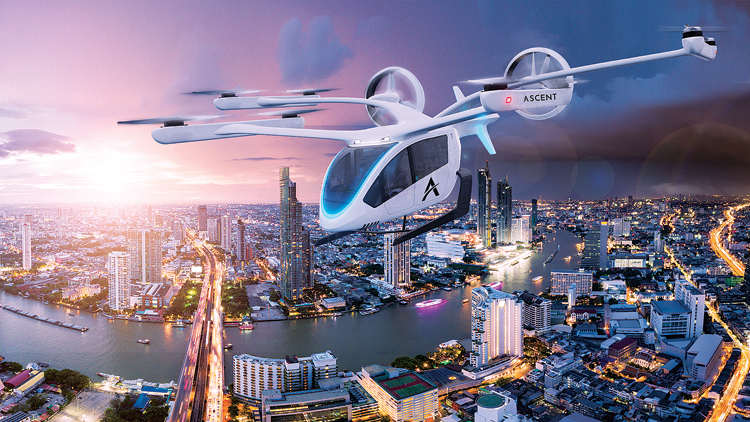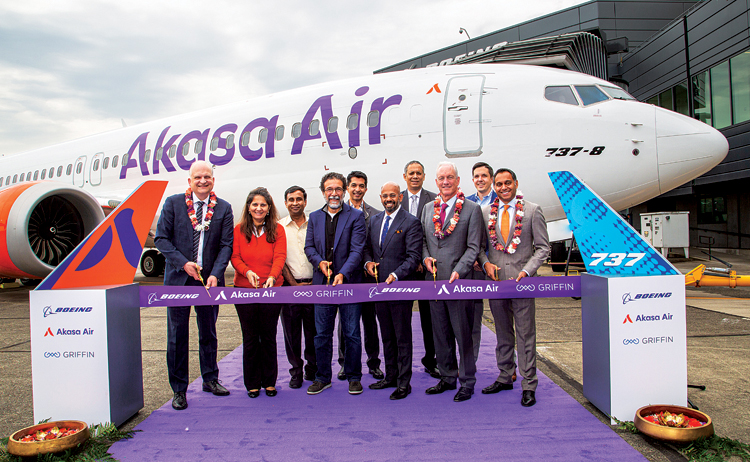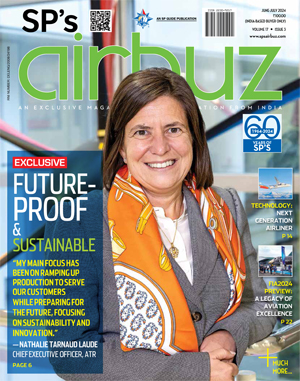2022: An Aerospace Year for the Books
With changed behavioural patterns, new business models, and ambitious goals, the aerospace industry rolled out of 2022 and entered 2023 with an optimistic outlook

As the world got back from the pandemic blues and travel resumed, the aerospace industry took off on a high note with many new announcements, launches, new airlines making entries on the block alongside some collaborations, consolidations and some closures. Here’s us looking back at some of the major moments that the aerospace industry witnessed.
AIRCRAFT MANUFACTURERS
Airbus. European aerospace manufacturer Airbus delivered 661 commercial aircraft to 84 customers in 2022 and registered 1,078 gross new orders. Airbus’ end December 2022 backlog stood at 7,239 aircraft. An Airbus H225 performed the first-ever helicopter flight using 100 per cent SAF in both of its Safran Makila 2 engines. Part of Airbus Helicopters’ test campaign, this flight attempted at understanding the impact of SAF use on the helicopter’s systems. Airbus, for the first time, also performed an A380 flight powered by 100 per cent SAF in one of its Rolls-Royce Trent 900 engines. The aim was to certify the use of 100 per cent SAF in Airbus airplanes and rotorcraft by 2030. The Airbus A321XLR successfully completed its first flight, powered by the CFM LEAP engine. The extra long-range aircraft will be able to carry 180-200 passengers for more than 10 hours of flight time, while consuming 30 per cent less fuel per seat than the previous generation of aircraft. Airbus also launched a 1,000-hr, four-aircraft flight-test programme for the A321XLR long-range narrowbody airliner. In another milestone, Airbus delivered its 500th A350 alongside unveiling its new Production Standard 2022. With this milestone, the A350 Family stood at 225 million passengers, more than 900 routes and over 400 orders in the backlog.

ATR. Regional aircraft manufacturer ATR received certification from the European Aviation Safety Agency (EASA) for its ATR 72 and 42 aircraft powered by the new Pratt & Whitney Canada PW127XT-M engine. ATR also launched a new engine variant during the Singapore Air Show that in the future will become standard on ATR 42 and 72 aircraft. The PW127XT will bring down fuel burn and engine maintenance costs even further – respectively by three per cent and 20 per cent.
ATR, Swedish airline Braathens Regional Airlines and sustainable aviation fuel (SAF) supplier Neste collaborated to enable the first ever 100 per cent SAF-powered test flight on a commercial aircraft.
ATR and Alliance Air, the only Indian public airline, signed a deal to acquire two ATR 42-600 via lessor TrueNoord. These new aircraft will support Alliance Air’s mission of serving challenging airfields in the Himalayas. Alliance Air began inducting the flights in 2022.
Boeing. American aerospace manufacturer Boeing reported 774 commercial orders in 2022 after cancellations and conversions, including 561 orders for the 737 family and 213 orders for the company’s market-leading twin-aisle airplanes. Boeing delivered 69 commercial jets in December, including 53 737 MAX, bringing total deliveries for 2022 to 480 airplanes.
Boeing closed the door on its Boeing 747 and the last of this aircraft left the company’s widebody factory in advance of its delivery to Atlas Air. Production of the 747, the world’s first twin-aisle airplane, began in 1967 and spanned 54 years, during which a total of 1,574 airplanes were built. At 250 ft 2 in (76.2 m), the 747-8 served as the longest commercial aircraft in service.
Boeing had the largest 787 Dreamliner order in its history in 2022 as United Airlines announced the order for 100 787 airplanes along with the option to purchase 100 more. The carrier is also purchasing 100 737 MAX jets, exercising 44 existing options and placing 56 new orders. The airline’s current orders for Boeing jets surpassed 530, including more than 430 737 MAX airplanes.
Bombardier. Bombardier celebrated the entry-into-service of Challenger 3500 launch customer aircraft. Bombardier also introduced Global 8000 aircraft as the flagship for a new era in business aviation. The Global 8000 jet features a top speed of Mach 0.94 – the fastest business jet in the skies. The Global 8000 aircraft will be the only true four-zone cabin business jet to have a range of 8,000 nautical miles, unlocking even more city pairs than ever before. Current Global 7500 operators will be able to retrofit their aircraft to experience the incredible performance enhancements on the Global 8000 aircraft. Bombardier also received NetJets, as the fleet launch customer for the Global 8000 aircraft, that placed a new firm order for four Global 8000 aircraft.
Dassault Aviation. French manufacturer Dassault Aviation completed wind tunnel tests and began production of the first primary parts for its ultra-long-range Falcon 10X, aiming for the aircraft’s service entry in late 2025. The Falcon 10X is one of two new aircraft the original equipment manufacturer (OEM) plans to bring to market soon. Dassault’s Falcon 6X is entering the final phase of its certification flight-test campaign with the EASA and the FAA. The 6X is expected to enter into service by mid-2023.
Embraer. In its contribution to the industry’s effort to reach carbon-neutral operation by 2050, Brazilian manufacturer Embraer has narrowed the initial focus of its Energia future aircraft programme to a hybrid-electric concept and a hydrogen fuel-cell strategy. Four of these concepts, including a fully electric option and direct hydrogen combustion, account for the primary pillars of the Energia concept. Embraer is now finished with the first phase of its programme and will start with a high-performance application that can fly 200 nm and carry 19 passengers in seats. The next model, a 30-seater, would have better operating costs. The hybrid-electric option is expected to be “technology ready” by the beginning of the 2030s, while the hydrogen fuel cell-powered application is expected to be ready by 2035. Embraer also reached a new milestone this year on the E-Jet programme, the delivery of the 1700th production aircraft. Embraer also completed the design of E190F and E195F passenger-to-freighter conversions for delivery from 2024.
Gulfstream. Gulfstream Aerospace Corp became the businessjet industry’s first OEM to fly on 100 per cent SAF. The flight took place on a Gulfstream G650 and was flown in partnership with engine supplier Rolls-Royce on the G650 BR725 engine. Gulfstream G700 made its Asia-Pacific debut in Vietnam as the first stop in Asia on the G700 world tour. Gulfstream also announced the 500th Gulfstream G650 and G650ER customer delivery in 2022. The Gulfstream G650 and G650ER were certified for steep approach landing operations by EASA, unlocking the ability for European operators of the ultra long-range aircraft to access even more airports around the world. The Gulfstream G800 successfully completed its first flight, officially launching the flight-test programme of the industry’s longest-range aircraft.
Textron Aviation. Textron Aviation earned European Aviation Safety Agency (EASA) type certification for the Cessna Citation XLS Gen2 business jet as well as Federal Aviation Administration (FAA) type certification in 2022. Another aircraft, the Cessna SkyCourier twin utility turboprop also achieved Federal Aviation Administration (FAA) type certification in March 2022.
ENGINE MANUFACTURERS
CFM LEAP. This year, CFM International surpassed 50,000 CFM LEAP and CFM 56 engines sold to over 600 customers around the world, accumulating over one billion engine flight hours while the CFM Leap engine officially hit a million flight hours in 2022. The advanced CFM LEAP engine continues to set new industry standards for fuel efficiency and asset utilisation, accumulating more than 23 million engine flight hours and 10 million cycles in commercial operation. Since 2016, the LEAP engine allowed operators to save more than 15 million tons of CO2. Additionally, with over 33,000 engines delivered, CFM56 powers more than 600 operators worldwide and has logged more than one billion flight hours.
Delta TechOps. Delta TechOps achieved another milestone in sustainability efforts, by successfully passing-off or deeming serviceable a Rolls-Royce Trent 1000 engine with blended sustainable aviation fuel (SAF). The test was performed on MRO customer and Delta SkyTeam Partner, Virgin Atlantic’s new- generation engine. This test marks several achievements related to sustainability efforts at Delta TechOps, including the first time the MRO has passed off an engine with SAF. The blend for this test used a mixture of SAF and conventional jet fuel (JetA) with the SAF component provided by one of Delta’s sustainability partners, Gevo.
GE. GE Aviation achieved 400 million flight hours and 37 years of on time delivery of their navigation database to airlines globally. GE, together with NASA announced they were the first to successfully test high power, high voltage hybrid electric aircraft engine components at high altitude conditions. The technology aims to make hybrid electric flight a reality for everyday commercial air travel, and have a real and necessary impact on the carbon emissions associated with flying. Specifically, GE and NASA ran a megawatt-class, multi-kilovolt hybrid electric system in conditions simulating altitudes up to 45,000 feet.
Pratt & Whitney. Pratt & Whitney PW4000-94-inch engine surpassed 150 million flight hours and 35 years of operational experience in 2022. Over 2,500 engines have been delivered since entry-into-service in 1987. The PW4000-94-inch engine serves more than 70 customers in 30 countries, powering Boeing 747/767 and MD-11, Airbus A300/310 and the KC-46A aircraft across passenger, cargo, and military missions. Pratt & Whitney successfully tested the GTF Advantage engine configuration as well with 100 per cent sustainable aviation fuel (SAF).

Rolls-Royce. Rolls-Royce completed building its UltraFan, technology demonstrator and is preparing to test the same. The first test of the demonstrator is expected to take place early next year and will be operated using 100 per cent SAF. The Rolls-Royce Pearl 700 engines for the industry flagship Gulfstream G700 and ultralong-range Gulfstream G800 achieved EASA) certification. Rolls-Royce delivered the 1,000th BR725 engine to Gulfstream and also announced that the Trent XWB-84, which powers the Airbus A350-900, accumulated more than 10 million engine flying hours.
Safran. Safran inaugurated ExceLab, its industry 4.0 centre which is a state-of-the-art laboratory system that provides braking, landing gear extension/retraction, wheel steering and overall system health. The aim of this project is to reduce CO2 emissions from aircraft ground movements by minimising their fuel consumption. Safran’s ENGINeUS 100 electric motor was selected by VoltAero to power the Cassio 330 prototype electric-hybrid aircraft. Safran also inaugurated three new industrial sites in Hyderabad and Bengaluru, and announced the largest maintenance and repair centre for CFM LEAP engines.
ADVANCED AIR MOBILITY (AAM)
2022 has proven to be an exciting year for advanced air mobility (AAM). The year witnessed the first-ever flight of a fully electric commuter airplane, Eviation’s nine-seat Alice, which made its inaugural test flight over the desert of Washington state in late September. In June, Tier 1 Engineering conducted the first flight of its all-electric Robinson R44 helicopter. Additionally, the fully electric R44 completed its first airport-to-airport flight. UK-based startup Vertical Aerospace also achieved a first tethered take off with its piloted, four-passenger VX4 eVTOL aircraft. Israeli startup Air also conducted the first tethered hover tests of the Air One eVTOL, a foldable, two-seat aircraft designed to function as a personal vehicle rather than an air taxi. Ohio-based Ryse Aero Technologies began conducting the first piloted flight tests of its ultralight, single-seat Recon eVTOL aircraft, which is intended for agricultural uses. Apart from electric aircraft, hydrogen- powered aircraft are also garnering attention. Universal Hydrogen recently announced its plans to fly the first hydrogen-powered regional airliner using a hydrogen-fuel-cell-based ZeroAvia for the first flight of this hydrogen fuel-cell Dornier 228 by the end of this year.
Eve Air Mobility. Eve Air Mobility announced the approval by the executive board of Brazil’s National Development Bank to support Eve’s eVTOL development efforts with two distinct credit lines, totaling $92.5 million. Eve had also unveiled its first full-sized eVTOL (electric vertical take-off and landing vehicle) cabin mock-up, which reinforces the Company’s human-centred design approach.

The aircraft will feature eight vertical lift rotors and a pair of pusher propellers and would operate flights of up to 60 miles on a full electric charge. With a cruise speed of 125 mph, most of the piloted flights will likely last no more than around 30 minutes, operating out of city centre vertiports. With a cruise speed of 125 mph, most of the piloted flights will likely last no more than around 30 minutes, operating out of city centre vertiport.
Boom Supersonic. Boom Supersonic released the latest details on the design of its supersonic Overture airliner at the Farnborough International Airshow. Boom also announced the signing of an expanded agreement with Collins Aerospace for evaluation and development of the ice-protection system for the Overture programme. Collins will also help Boom assess air data system designs that meet Overture’s field performance and range requirements.
Total Energies. Fuel supplier Total Energies provided 27 tonnes of unblended SAF produced in Normandy, France, from hydroprocessed esters and fatty acids (HEFA) consisting primarily of used cooking oil. Airbus plans a second flight with the same aircraft from Toulouse to Nice Airport on March 29 to test the use of SAF during take-off and landing.
With the flight, the A380 became the third Airbus aircraft type to fly on 100 per cent SAF over the course of 12 months; the first—an Airbus A350—flew in March 2021, followed by an A319neo in October 2021. In April last year, the A350 flew three flights over the Mediterranean Sea pursued by a Falcon chase airplane to compare in-flight emissions of both kerosene and HEFA fuel. A team consisting of Airbus, Rolls-Royce, German research centre DLR, and SAF producer Neste also carried out compliance tests using 100 per cent SAF and experienced “no operational issues.”
Lilium. In 2022, Lilium successfully completed its second EASA Design Organisation Approval (DOA) audit and submitted Means of Compliance proposals for the Lilium Jet to EASA. The third DOA was successfully completed on the 15th of December, and the fourth and final audit is targeted for the first half of 2023. The DOA, once granted, will show that Lilium has the capability to develop and certify commercial aircraft - a necessary prerequisite for Lilium to obtain a Type Certification of the Lilium Jet. As of the end of November 2022, Lilium had filed a total of 74 patent applications with the European Patent Office (EPO).
Volocopter. In November, Volocopter completed a two-week test flight campaign for its multirotor heavy-lift cargo carrier, the VoloDrone. Also in November, Groupe ADP, Skyports and Volocopter commissioned Europe’s first fully integrated vertiport terminal for the urban air mobility (UAM) industry. In October, Aeroporti di Roma (ADR), Atlantia, UrbanV, and Volocopter, also successfully completed the first crewed eVTOL test flights in Italian airspace. In May, Volocopter’s fixed-winged passenger aircraft, the VoloConnect, completed its first flight. And in March, Volocopter conducted the first crewed eVTOL flight in France, becoming a two-time pioneer as the first eVTOL developer to conduct both crewed and remotely piloted test flights in France.
INDIA
Air India. Air India was officially handed over to Tata Group by the Indian Government in January 2022, and just at the end of the year, Tata Group and Singapore Airlines (SIA) announced their merger. Tata Group owns 51 per cent stake in Vistara and the remaining 49 per cent shareholding is with SIA. The merger would give SIA a 25 per cent stake in an enlarged Air India Group with a significant presence in all key market segments. SIA and Tata Group aim to complete the merger by March 2024, subject to regulatory approvals. As part of the merger transaction, SIA will also invest 2,058.5 crore in Air India. Tata Group is the owner of the budget airlines Air India Express and AirAsia India, which will combine under the Air India name by March 2024. It would bring the total number of aircraft in the fleet to 218 and combine Air India’s 113 with Vistara’s 53 and AirAsia India’s 28.
Akasa Air. Akasa Airline entered the Indian aviation market under the Akasa Air brand by SNV Aviation, to operate as a Low Cost Carrier (LCC) or an Ultra LCC (ULCC). Akasa Air, which commenced operations in early August 2022, progressively scaled up its operations through the year and took delivery of 13 aircraft, carrying over 5.5 lakh revenue passengers. By December 2022, the airline had crossed the milestone of operating over 500 weekly flights and has announced a total of 20 unique routes across 13 cities, namely Ahmedabad, Bengaluru, Kochi, Chennai, Mumbai, Delhi, Guwahati, Agartala, Pune, Visakhapatnam, Lucknow, Goa, and Hyderabad. Akasa Air’s fleet size is expected to be 18 aircraft by the end of March 2023 and over the next four years, the airline aims to add 54 additional aircraft, taking its total fleet size to 72 aircraft.

IndiaOne. IndiaOne Air is a regional airline based in Ahmedabad, India. The new kid on the block is the first scheduled airline in India to operate a Single-engine aircraft. The airline was granted AOC in June 2022. IndiaOne Air aims to connect tier 2 & 3 cities with metropolitan city. Starting from Eastern India, it aims to provide both inter-state and intra-state scheduled flights with the vision of connecting unserved and underserved cities; which otherwise are difficult and time consuming to travel to by road and train.
MINISTRY OF CIVIL AVIATION
India’s re-election to ICAO Council. MoCA, along with MEA, organised an active campaign by convening a gathering of delegates from over 70 countries to support India’s candidature in the ICAO Council.
During the 41st General Assembly of ICAO, India has been reelected to the ICAO Council (2022-2025) under Part II, comprising countries which make the largest contribution to the provision of facilities for international civil air navigation.

Digi Yatra. The Minister of Civil Aviation launched Digi Yatra in December at Delhi, Bengaluru and Varanasi Airports. The implementation at Kolkata, Pune, Vijayawada, and Hyderabad Airports is planned by March 2023. It is to be implemented across all the airports in a phased manner. Digi Yatra App is available at android as well as IoS platform. Digi Yatra policy is an initiative conceived to achieve contactless, seamless processing of passengers at airports based on Facial Recognition Technology (FRT), providing passengers seamless and hassle-free experience at airports without the need for verification of ticket and ID at multiple touch points.
Drones. Drone certification scheme was notified on January 26, 2022, making it easier to obtain type certificates by drone manufacturers. Drone import policy was also notified on February 9, 2022, banning import of foreign drones and freeing up import of drone components. Drone (Amendment) Rules, 2022 were notified on February 11, 2022, abolishing the requirement of a drone pilot licence.
A grand Bharat Drone Mahotsav 2022 was organised in Delhi, attracting over 70 drone exhibitors and 10,000 visitors, including school-children.
AIRPORTS
Greenfield Airports Policy, India. Government of India (Gol) had formulated a Greenfield Airports (GFA) Policy, 2008 which provides guidelines, procedure and conditions for establishment of new Greenfield Airports in the country. Government of India has so far accorded ‘in-principle’ approval for setting up of 21 Greenfield Airports across the country namely, Mopa in Goa, Navi Mumbai, Shirdi and Sindhudurg in Maharashtra, Kalaburagi, Vijayapura, Hassan and Shivamogga in Karnataka, Dabra (Gwalior) in Madhya Pradesh, Kushinagar and Noida ( Jewar) in Uttar Pradesh, Dholera and Hirasar in Gujarat, Karaikal in Puducherry, Dagadarthi, Bhogapuram and Oravakal (Kurnool) in Andhra Pradesh, Durgapur in West Bengal, Pakyong in Sikkim, Kannur in Kerala and Donyi Polo, Itanagar in Arunachal Pradesh across the country.

Out of these, 9 Greenfield airports viz. Durgapur, Shirdi, Kannur, Pakyong, Kalaburagi, Orvakal (Kurnool), Sindhudurg, Kushinagar and Donyi Polo, Itanagar have been operationalised. Further one more greenfield airport i.e. Manohar international airport-Mopa Goa was inaugurated in December and is ready for operationalisation.
AAI Airports. New Integrated Terminal Building of 30,000 sqm area, for 1200 PHP and annual capacity of 3 MPPA & Apron for six additional parking Bays for A321 type of Aircrafts at Agartala Airport at the cost of 450 crore was inaugurated on January 4, 2022.
Development of Deoghar Airport by Deoghar Airport Limited {A joint venture of Airports Authority of India (51 per cent equity stake) & Government of Jharkhand (GoJ) (49 per cent equity stake)} in collaboration with DRDO for operation of Airbus-321/ B737 type of aircraft at the cost of 400 crore with a grant of 200 crore from DRDO was inaugurated on July 12, 2022.
Prime Minister Narendra Modi inaugurated Terminal 2 of Kempegowda International Airport at Bengaluru in November 2022. The terminal has been built at a cost of 5,000 crores and aims to multiply the capacity of flyers the airport can handle. With the inauguration of a second terminal, the airport will be able to handle around 5-6 crore passengers annually, a massive increase from the current 2.5 crores.
The Ministry of Civil Aviation’s flagship programme Regional Connectivity Scheme UDAN (UdeDesh ka Aam Nagrik), achieved a number of new milestones in 2022.
- 50 New RCS routes commenced between January 1, 2022 and December 8, 2022.
- 5 Airports/Heliports Keshod, Deoghar, Gondia, Jeypore & Almora (H) operationalised.
- 10 new RCS routes commenced in North Eastern States in the country.
- 140 New RCS Routes awarded under UDAN 4.2 & 4.3.
- 16 New Airports/ Heliports/ water aerodromes identified under UDAN.





